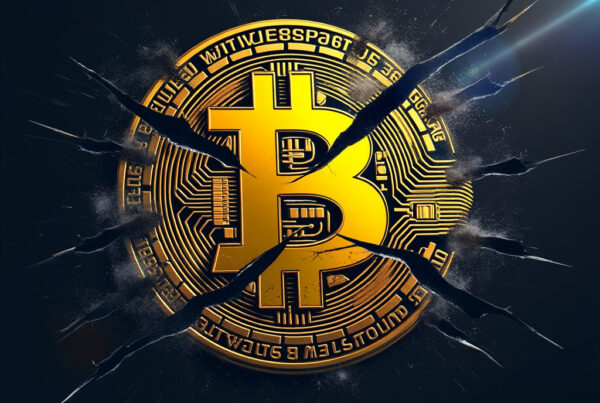My journey through blockchain goes back to late 2012. Since then, I have gone through several phases in a love hate relationship. At first, I had no clue what I was doing. I was sending money orders to some bank in Japan in order to fund an account in MtGox. This was after the money I had sent Dwolla, a financial service that used to allow the buying of bitcoin, returned my money saying that they no longer provided the service. Regardless, I wanted to get some bitcoin. I ended up buying 12 BTC on behalf of my girlfriend and I. We then made some decent money on paper and then lost it all thanks to the MtGox hack. Did I know what I had bought and lost? Not really.
Back in the early days on bitcoin, the primary notion was that it was simply “digital money”. It was a hedge against governments and the monetary system just in case another 2008-like catastrophic event occurred. That was good enough for me. Did I understand the technology? Nope. In fact, that’s one reason I chose to leave the BTC in an exchange rather than to risk it with my own doing. As many newcomers to crypto can relate, I didn’t feel comfortable transferring funds. Well, I definitely learned my lesson. And this is why I am sharing this information so that you understand the technology and learn from others’ mistakes.
Crypto Wonder Years
After losing the BTC on MtGox, I lost interest for the next several years while bitcoin ranged between $250 and $600 approximately. I guess seeing it all vanish overnight wasn’t a pleasant feeling. Even though deep down I always blamed myself for being lazy and not taking the time to educate myself, especially on how to protect my investment. As a result, I stayed away from crypto. The next time I came across cryptocurrencies was in the early summer of 2017 when I saw that the crypto sphere was now made up of hundreds of bitcoin clones. At least that is what I thought.
About a few weeks later, I saw that some of these coins, Litecoin in particular, went from $3 to about $55. Holy! That’s nice money! This peeked my curiosity. I started looking at some of the other projects and trying to understand why they were different. I then got introduced to Ripple, a cross border money transfer protocol that can settle in seconds as opposed to the archaic and slow Swift network. Being that I am familiar with payments overseas, I was extremely intrigued. After further research, Ripple became my first altcoin. This is where my understanding of blockchain technology changed. It is not just digital money, but technology that can change every aspect of the way the world functions.
Blockchain for Beginners
The word blockchain scares beginners. But it really isn’t that bad. Some companies have taken the time to create easy to follow videos in order to educate newcomers. I have seen many of these videos and owe much of my knowledge to them. If I were to pick one to show to a newcomer to crypto, it would be this one put out by IBM. A very short and easy to understand use case depiction of how blockchain will benefit society. From this you can get an idea of how blockchain can be implemented within other industries.
What are AltCoins?
Bitcoin is no longer alone. There are many other coins known as altcoins, coins that are not Bitcoin. Some of these projects are building what they considered to be more advanced versions of a blockchain. They are aiming to handle many more transactions per second as well as offer other benefits thanks to the technology. There are also many altcoins who are not building a blockchain, but are building applications to run on a blockchain. Up until 2018, the majority of these applications were being designed to run on a smart contract platform called Ethereum. Ethereum is a blockchain that allows for transactions to occur automatically without a middleman using cryptography, digital signatures, and secure computations. This is referred to as a smart contract platform. Think of it as the Android for blockchain where applications are built on it.
What are Smart Contracts?
To better explain what smart contracts are, BlockGeeks on YouTube have put out this easy to understand video which gives a brief explanation of what smart contracts are. Feel free to follow them as they have a lot of educational videos on blockchain. It is through education that we will achieve mass adoption. Don’t forget to share.
Leaders of the Smart Contract World
Smart contract blockchains set the framework for developers to build their possibly life changing applications. Ethereum took the crypto world by storm as it became the first heavyweight smart contract platform which debuted back in July, 2015. Many developers began to create their applications based on the Ethereum framework. As the technology grew, it became apparent that the 25 transactions per second that Ethereum could handle was not enough for real life applications. After all, Visa can handle north of 3,000 transactions per second. This is where the next generation blockchains come in. In response, Ethereum is currently working on scaling their network to handle a higher transaction rate. The success of these efforts remains to be seen.
The next generation blockchains currently include projects such as EOS, TRON, CARDANO, NEO, ONTOLOGY, and ZILLIQA. You can find information on these projects here. Of the list, EOS and TRON lead the pack with both of them possessing the majority of the top 50 applications by user activity per Dappradar rankings. In time, we will know who is the true leader of the pack.






Comments